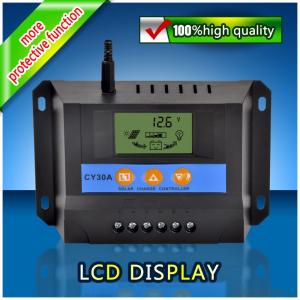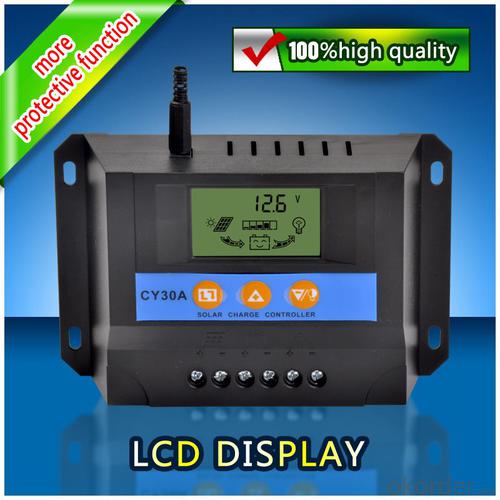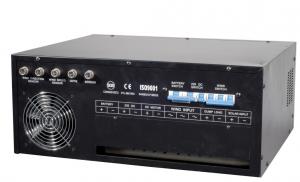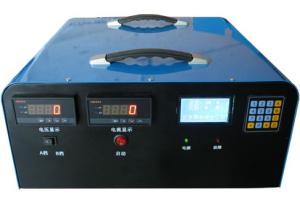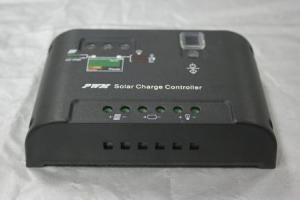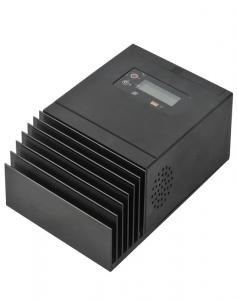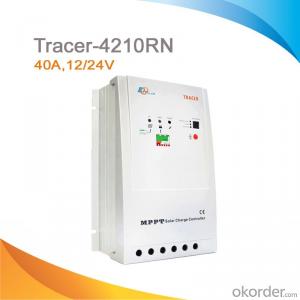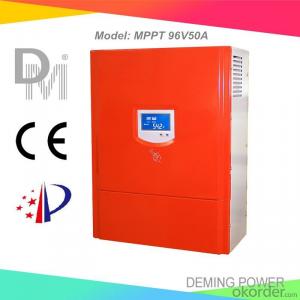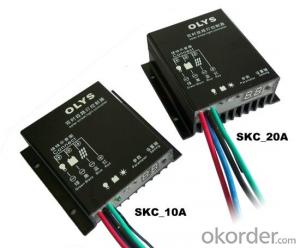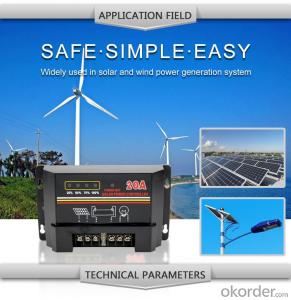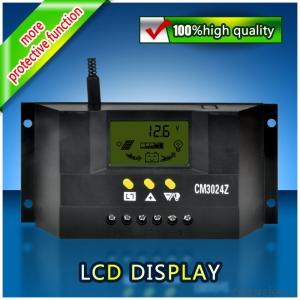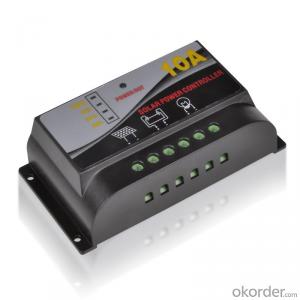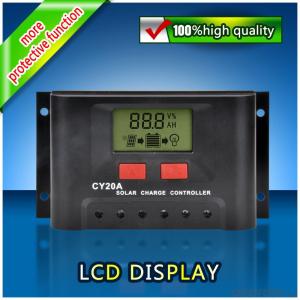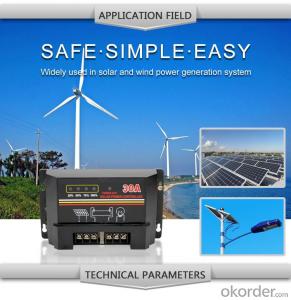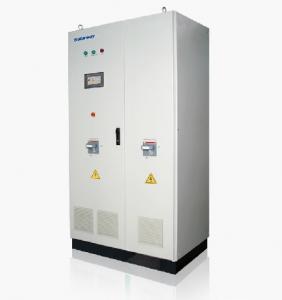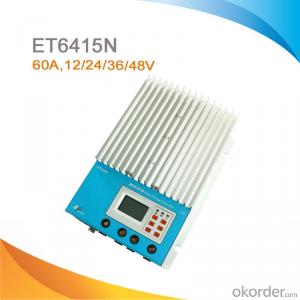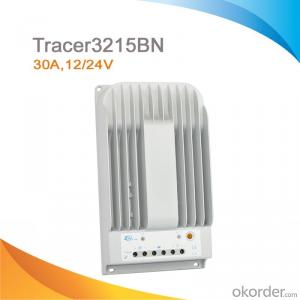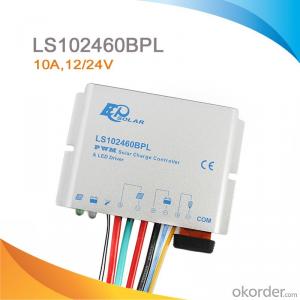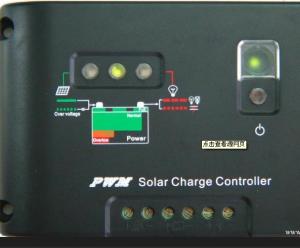Caleffi Solar Controllers - Solar LCD Controller CY30A, Hot-Selling, Best Price
- Loading Port:
- China main port
- Payment Terms:
- TT or LC
- Min Order Qty:
- 1 unit
- Supply Capability:
- 10000 unit/month
OKorder Service Pledge
OKorder Financial Service
You Might Also Like
Product Introduction
Solar controller is control device which can control solar panel and transform solar energy into electricity then store to the battery bank. Solar controller is the most important part in offgrid system, whose performance has much effect on life expectancy and operation of the whole system, especially the battery expectancy.
Application Areas
Standalone Photovoltaic power station
Standalone Domestic household photovoltaic power system
Mobil communication base stations, expressway and other non-residential regions.
Coastal islands, remote mountainous, border posts for regions shortage of or without electricity.
Government demonstration projects, landscape lighting project etc.
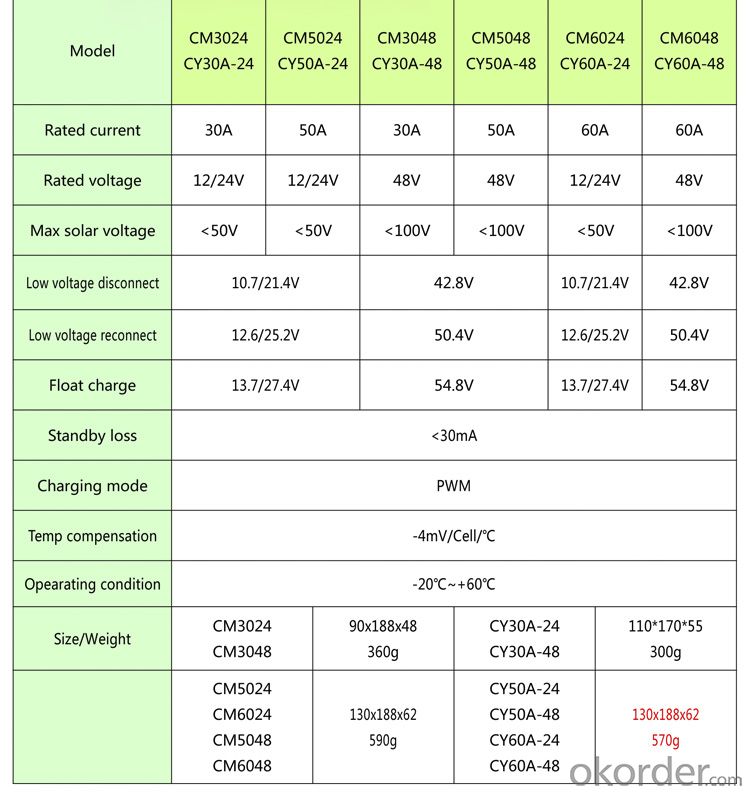
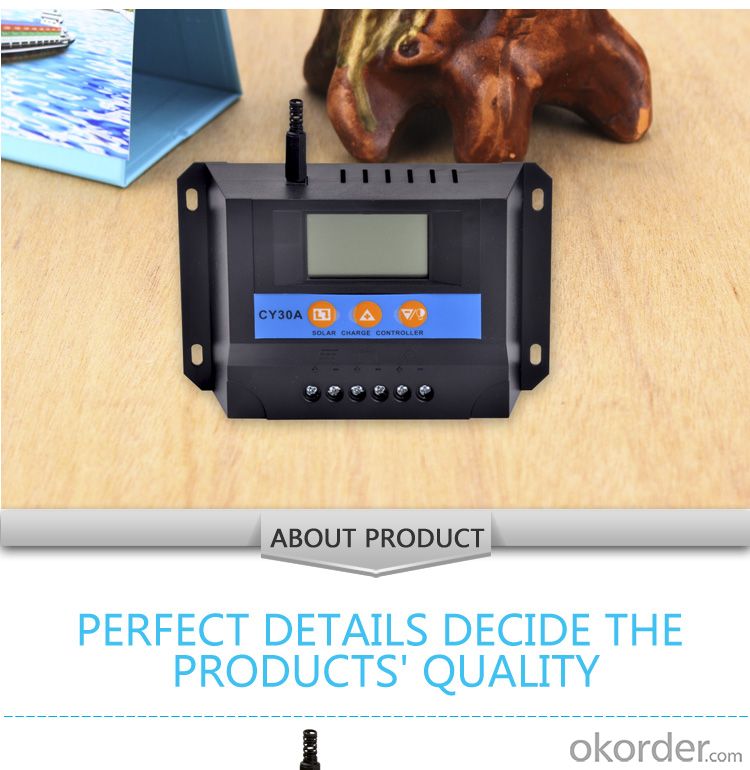
- Q: How does a solar controller prevent excessive heating of batteries?
- A solar controller prevents excessive heating of batteries by regulating the charging process. It monitors the battery voltage and temperature, and adjusts the charging current accordingly to prevent overcharging and overheating. This helps protect the batteries from damage and extends their lifespan.
- Q: Can a solar controller be used with a solar-powered lighting system?
- Yes, a solar controller can be used with a solar-powered lighting system. The solar controller helps regulate and control the charging and discharging of the battery used in the lighting system, ensuring optimal performance and longevity of the system.
- Q: How does a solar controller handle variations in battery discharge level?
- A solar controller regulates the charging process of a battery by monitoring its voltage levels. When it detects a low discharge level, it adjusts the charging parameters accordingly to provide a higher charging current. This helps in replenishing the battery quickly and efficiently. Conversely, if the discharge level is high, the solar controller decreases the charging current to prevent overcharging and prolong the battery's lifespan.
- Q: Can a solar controller be used in a solar-powered electric motorbike racing system?
- Yes, a solar controller can be used in a solar-powered electric motorbike racing system. A solar controller helps regulate the voltage and current from the solar panels to ensure efficient charging of the batteries in the motorbike. It can also provide protection against overcharging and over-discharging of the batteries. Thus, incorporating a solar controller in the racing system can optimize the usage of solar energy and enhance the overall performance of the motorbike.
- Q: What is the typical warranty period for a solar controller?
- The warranty period for a solar controller can differ based on the brand and model, but most reputable manufacturers provide warranties lasting from 1 to 5 years. Certain high-quality controllers may even offer extended warranties of up to 10 years. Prior to buying a solar controller, it is crucial to thoroughly review the manufacturer's warranty terms and conditions to ensure they align with your unique requirements and expectations.
- Q: Can a solar controller be used with a solar-powered air conditioning system?
- Yes, a solar controller can be used with a solar-powered air conditioning system. A solar controller helps regulate and optimize the charging of batteries in a solar system, ensuring efficient utilization of solar energy. In the case of a solar-powered air conditioning system, the solar controller would play a crucial role in managing the power flow between the solar panels, batteries, and the air conditioning unit, ensuring the system operates effectively and efficiently.
- Q: Can a solar controller be used with solar panels that are mounted on a rooftop?
- A solar controller can be utilized with solar panels that are fixed on a rooftop. Known as a charge controller, a solar controller is a device that manages the battery charging in a solar power system. It is typically positioned between the solar panels and the batteries to prevent battery overcharging and over-discharging. Irrespective of the installation location, be it a rooftop or any other place, a solar controller is an indispensable component of a solar power system. It enhances the charging procedure, safeguards the batteries against damage, and boosts the overall system efficiency. Residential and commercial installations often opt for rooftop-mounted solar panels due to their easy installation and available space. In such cases, the solar controller plays a vital role in ensuring proper battery charging and efficient utilization of solar energy. Hence, regardless of the mounting location, whether it is a rooftop or any other place, a solar controller is necessary to regulate the charging process and guarantee the durability and effectiveness of the solar power system.
- Q: How does a solar controller prevent damage from reverse polarity connections?
- A solar controller prevents damage from reverse polarity connections by incorporating diodes that block the flow of current in the wrong direction, preventing it from reaching the sensitive components of the system.
- Q: How does a solar controller handle battery reconditioning?
- A solar controller does not handle battery reconditioning directly. Battery reconditioning is a process that involves restoring old or weak batteries to their optimal performance. Solar controllers, on the other hand, are responsible for regulating the charge from the solar panels to the batteries and preventing overcharging or discharging. While some advanced solar controllers may have features like equalization charging, which can help extend battery life, the actual reconditioning process usually requires separate equipment and techniques.
- Q: How does a solar controller handle the switching of loads?
- A solar controller handles the switching of loads by monitoring the battery voltage and determining when it is necessary to connect or disconnect the loads. It ensures that the loads are only connected to the battery when it has sufficient charge, and disconnects them when the battery voltage drops below a certain threshold to prevent over-discharging. This switching mechanism helps optimize the utilization of solar energy and protects the battery from damage.
Send your message to us
Caleffi Solar Controllers - Solar LCD Controller CY30A, Hot-Selling, Best Price
- Loading Port:
- China main port
- Payment Terms:
- TT or LC
- Min Order Qty:
- 1 unit
- Supply Capability:
- 10000 unit/month
OKorder Service Pledge
OKorder Financial Service
Similar products
Hot products
Hot Searches
Related keywords
